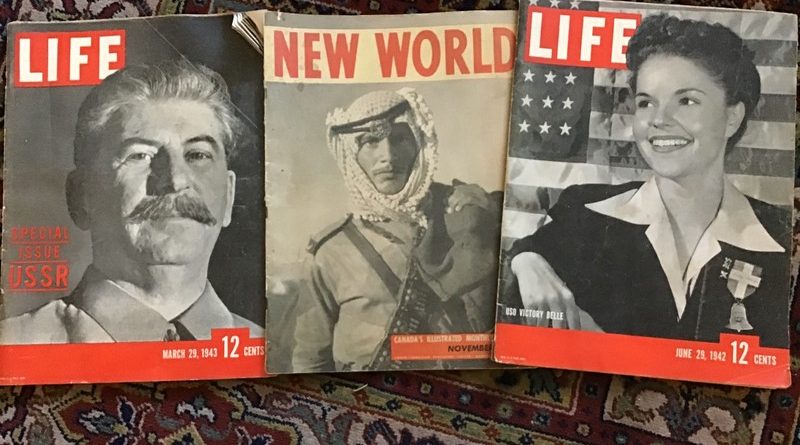What’s behind your walls?
The February issue of IMAGE typically explores and appreciates the heritage of Sandy Hill. In honour of this, we asked readers to share the interesting items they have uncovered while renovating their homes. Here’s a selection of our submissions.
 The house at 505 Chapel was built in three stages: 1892, 1902, and the rear section in the 1930s. My ex-wife and I bought the house in 1984. When we were moving in, we found a woman in the house. She was a neighbour who had looked after the elderly woman who had owned the house and passed away. Apparently, the past owner had promised her $78,000 and she was determined that it was here. She never found it. As we renovated the house, removed the plaster and lathe, old cast iron plumbing, knob and tube wiring, the thought was always there … $78k.
The house at 505 Chapel was built in three stages: 1892, 1902, and the rear section in the 1930s. My ex-wife and I bought the house in 1984. When we were moving in, we found a woman in the house. She was a neighbour who had looked after the elderly woman who had owned the house and passed away. Apparently, the past owner had promised her $78,000 and she was determined that it was here. She never found it. As we renovated the house, removed the plaster and lathe, old cast iron plumbing, knob and tube wiring, the thought was always there … $78k.
One day I was on a stepladder working through the trap door in the attic. I had my hand probing through the insulation and I felt a cylindrical metal object …. a can? The money??? As I pulled the “can” out to look into it, I got a face full of soot! It turned out to be a small section of stove pipe.
Nowhere was there any money to be found, only old German newspapers and a beer bottle from the Capital Brewing Co. that I found lodged in the rubble stone foundation.
We too left many “time capsules” throughout the house for the next owners, mostly in the form of complete newspapers, photos, and notes. A house should tell a story!
Robert Batsch
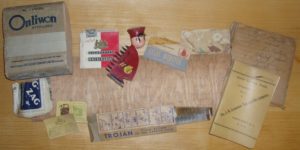
I have been diverted by many interesting reno finds over the years. In addition to the standard old layers of wallpaper and newspapers from the ‘20s and‘30s, some of the items discovered under the floorboards include: empty cigarette packages, cards from cigarette packages, some E.B. Eddy “sanitized wax toilet paper” (appropriately found during a bathroom reno), a shoe polishing brush, shopping lists, and some cartoons on (now very faded) film. But the most personal and intriguing bit of history has to be a note written in pencil on the back of some plywood by Patrice Brunet in 1942 when he carried out work on the third floor of a Besserer Street home. From what I can decipher, it says:

Kathy Moyer with deciphering help from François Bregha and Betsy Mann
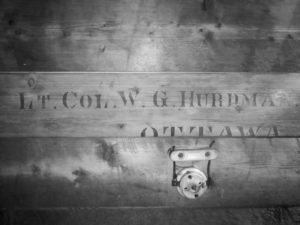
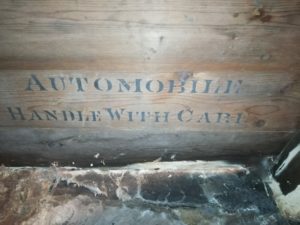 Years ago, on the pine boards that form the ceiling of the basement cold storage room, I spotted these vestiges of the original owner of my house. Seems Colonel Hurdman had a car shipped to him and put the crate to good use.
Years ago, on the pine boards that form the ceiling of the basement cold storage room, I spotted these vestiges of the original owner of my house. Seems Colonel Hurdman had a car shipped to him and put the crate to good use.
Ralph Blaine
 Chris Evans and Clara Winer found this calendar in the walls of their Blackburn Avenue home recently while doing major renovations. Framed, it now decorates their new kitchen, a reminder of the neighbourhood’s history.
Chris Evans and Clara Winer found this calendar in the walls of their Blackburn Avenue home recently while doing major renovations. Framed, it now decorates their new kitchen, a reminder of the neighbourhood’s history.
Betsy Mann
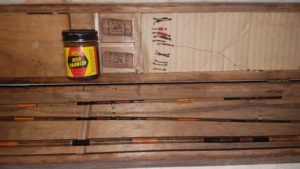 Shortly after moving to our house, a contractor found a wooden box tucked away in the basement joists. While it wasn’t full of 1920s baseball cards as we had hoped, it did contain an old three-piece fishing rod, lures, and varnish. The previous owner later told us the box had been left by the house’s original owner who lived here from 1927 to 1977. Years from now, we’ll leave the box and a brief note on its history for the home’s next owner to find.
Shortly after moving to our house, a contractor found a wooden box tucked away in the basement joists. While it wasn’t full of 1920s baseball cards as we had hoped, it did contain an old three-piece fishing rod, lures, and varnish. The previous owner later told us the box had been left by the house’s original owner who lived here from 1927 to 1977. Years from now, we’ll leave the box and a brief note on its history for the home’s next owner to find.
Allen and Michaela Nolan
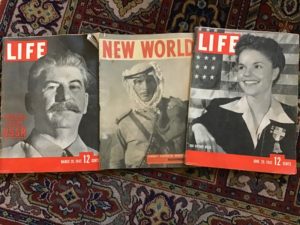 When I moved to Ottawa in the 1970s, I shared a house close to the Canal. As in many old houses, the heat from the furnace seemed not to reach the back rooms in winter. So one day, we decided to check out the attic and see whether we could add some insulation. When we reached the attic we realized that someone had already done so some 35 years earlier; and had laid down magazines and newspapers on the floor, our ceiling.
When I moved to Ottawa in the 1970s, I shared a house close to the Canal. As in many old houses, the heat from the furnace seemed not to reach the back rooms in winter. So one day, we decided to check out the attic and see whether we could add some insulation. When we reached the attic we realized that someone had already done so some 35 years earlier; and had laid down magazines and newspapers on the floor, our ceiling.
Some of these had been chewed by mice but many were still in excellent condition. Needless to say, we stopped our insulation job of a common accord, as we devoured the dusty news from three decades earlier. The insulation could wait for another day.
François Bregha
